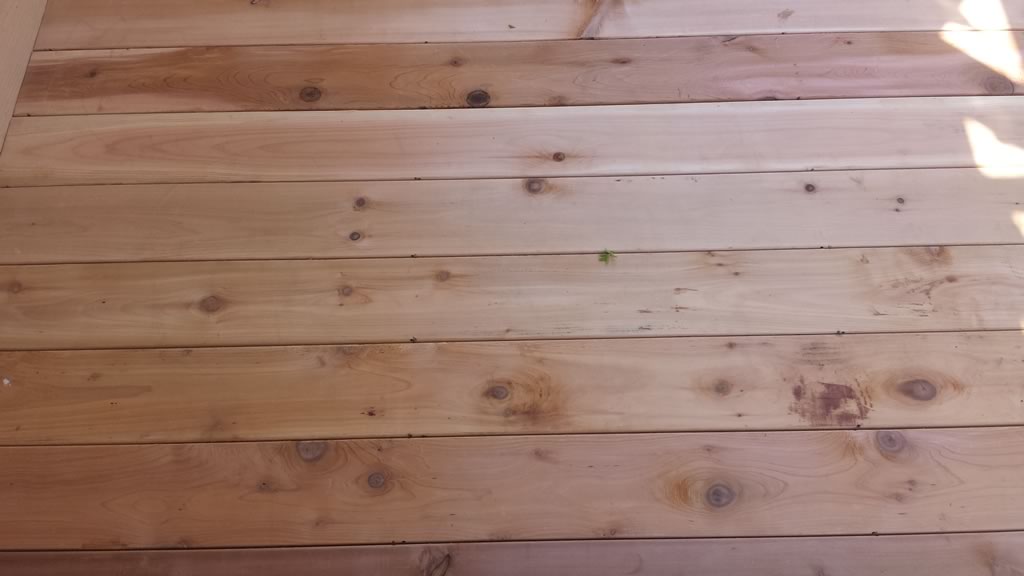- You are here:
- Home »
- Blog »
- Cedar Decks »
- The Definitive Guide to Cedar Decking

The Definitive Guide to Cedar Decking
Cedar decking is a fantastic choice for any homeowner looking for an elegant and durable outdoor addition to their homes. As a decking lumber, cedar is a magnificent wood that lends a strong hint of the Pacific Northwest to residential and commercial exteriors, what with its cinnamon tones that weather gracefully into a rustic silver and its distinct fragrance that can last for decades.
Cedar wood for decks is not only beautiful; it has unique properties that make it highly resistant against rot, decay, insects and harsh elements. It is dimensionally stable, which means that it stays straight and flat after installation. With its consistent grain and density, it is less likely to cup, warp or twist.
Cedar decks are popular because of their unique and warm aesthetic quality, with a wide variety of hues and grain patterns to choose from. Freshly cut cedar boards are very fragrant and often come in different shades of peach, honey and light brown. When allowed to age, cedar wood will slowly turn into a deep silver gray patina.
A Closer Look at Cedar Decking
Cedar trees are an integral part of the forestry and decking industry and have been so for over a century. The trees are principally grown in the forests of the Pacific Northwest. They can grow up to 200 feet tall and diameter of up to 13 feet. They are known to live for a really long time, with one verified to be 1,460 years old.
While Western Red Cedar is the most popular choice, there are other types of cedar wood available. It is best to consult with a professional deck builder to discuss which type of cedar would work best for your deck building needs and budget. Western Red Cedar is known to be more resistant to rot than its Eastern counterparts. It is lightweight and easy to work with, and its heartwood exhibits minimal shrinkage.
Eastern White Cedar, on the other hand, is not as common as red cedar. It is moderately soft and lightweight and like most cedars, it is naturally resistant to insect infestation and rot. The heartwood has a reddish, light brown tinge that turns darker when exposed. It has an ability to hold nails better and finishes rather well.
Another type of ideal for cedar decking is Atlantic Cedar, which has a distinct aromatic odor and a light brown heartwood. It also has a straight grain and fine texture, easily workable with tools, resistant to decay, holds paint well, shrinks minimally and finishes very smoothly.
Advantages of Cedar Wood for Decks
Cedar has properties that are similar to redwood, mainly because they are closely related, however, cedar is tougher and more flexible than redwood. This means that cedar is less brittle and can flex more without shattering unlike redwood. It also has less density and contains less natural oils so it absorbs and accepts stain much easier. There are many benefits to using cedar in deck building. Let’s take a closer look at some of them.
- Costs—cedar decking prices are considerably lower than redwood and other exotic hardwoods. It is even less expensive than composite decking, although the prices may vary from one region to another.
- Highly available and abundant—cedar is available in almost all lumber stores in the country. This tree is abundant in forests and its commercial logging is responsibly managed by the government, so that it is very environment friendly.
- Resilient and reliable—the cedar wood in itself is naturally permeated with particles that make it resistant to moisture, ultraviolet rays, and insect damage. This is why cedar as a species has survived even in moisture-heavy environments.
- Low and easy maintenance—cedar decks are very easy to maintain. Because the wood has low levels of pitch and resin, it can easily absorb stain or finish.
- Natural heat insulation—the surface remains cool even in hot days, so the deck is more foot-friendly
Distinguished, elegant and rich—the color of a red cedar decking is unique, deep and luxurious. When freshly cut, the wood takes on an amber or pinkish hue, but by the time it is ready to be used for the deck, it has turned into a reddish brown cinnamon color. You can choose to retain its natural, elegant color with finishes or stains, or you can let it age to a silver grey color for a more rustic feel.
Cedar decks provide both practical and aesthetic benefits to any property and increases its value as a whole. When building a cedar decking, it is important to work with a professional deck contractor who has extensive experience in working with cedar, this way, you would get only the best.
